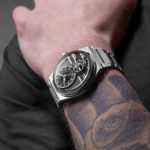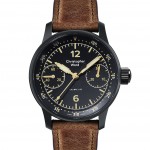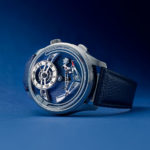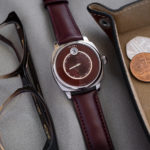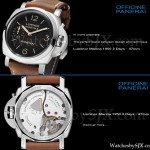Thirty Days with the Christopher Ward C12 Loco
One of the year's best affordable watches.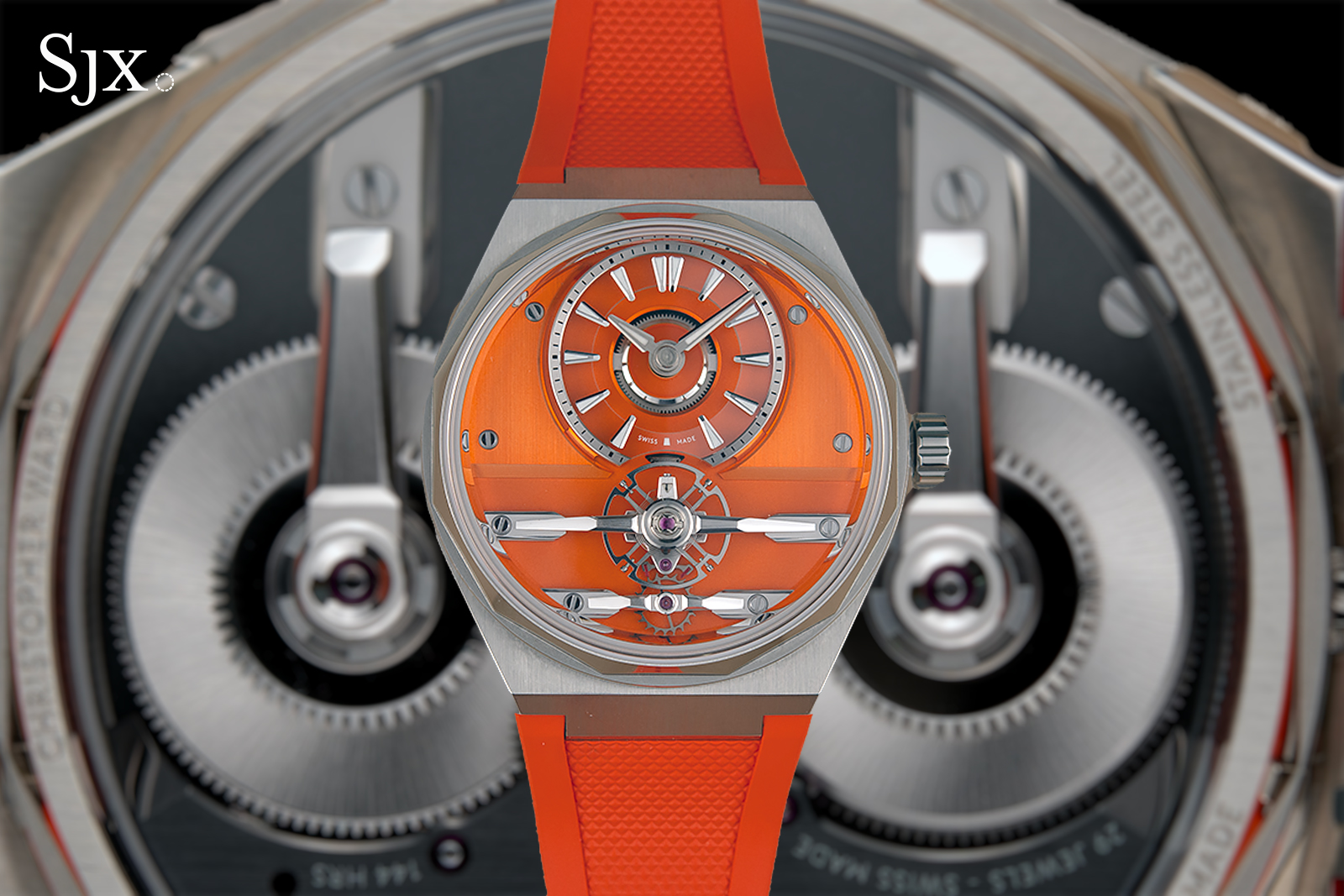
‘Micro-brand’ watches are rarely about finishing or movement design. The business model employed by this segment of the industry typically involves off-the-shelf movements combined with made-to-order cases and dials; this is how Christopher Ward (CW) got started. But having merged with its movement supplier a decade ago, the brand has become more ambitious, first with the striking Bel Canto and again with the C12 Loco, which reimagines the Valjoux cal. 7750 as a budget-priced mechanical sculpture inside a sporty steel case.
Architectural watchmaking is not new, but it is new at the price point targeted by CW, which recently moved into larger premises in Maidenhead about 30 minutes west of London. Having spent a month with the Loco, it’s worth looking at what they did, and how.
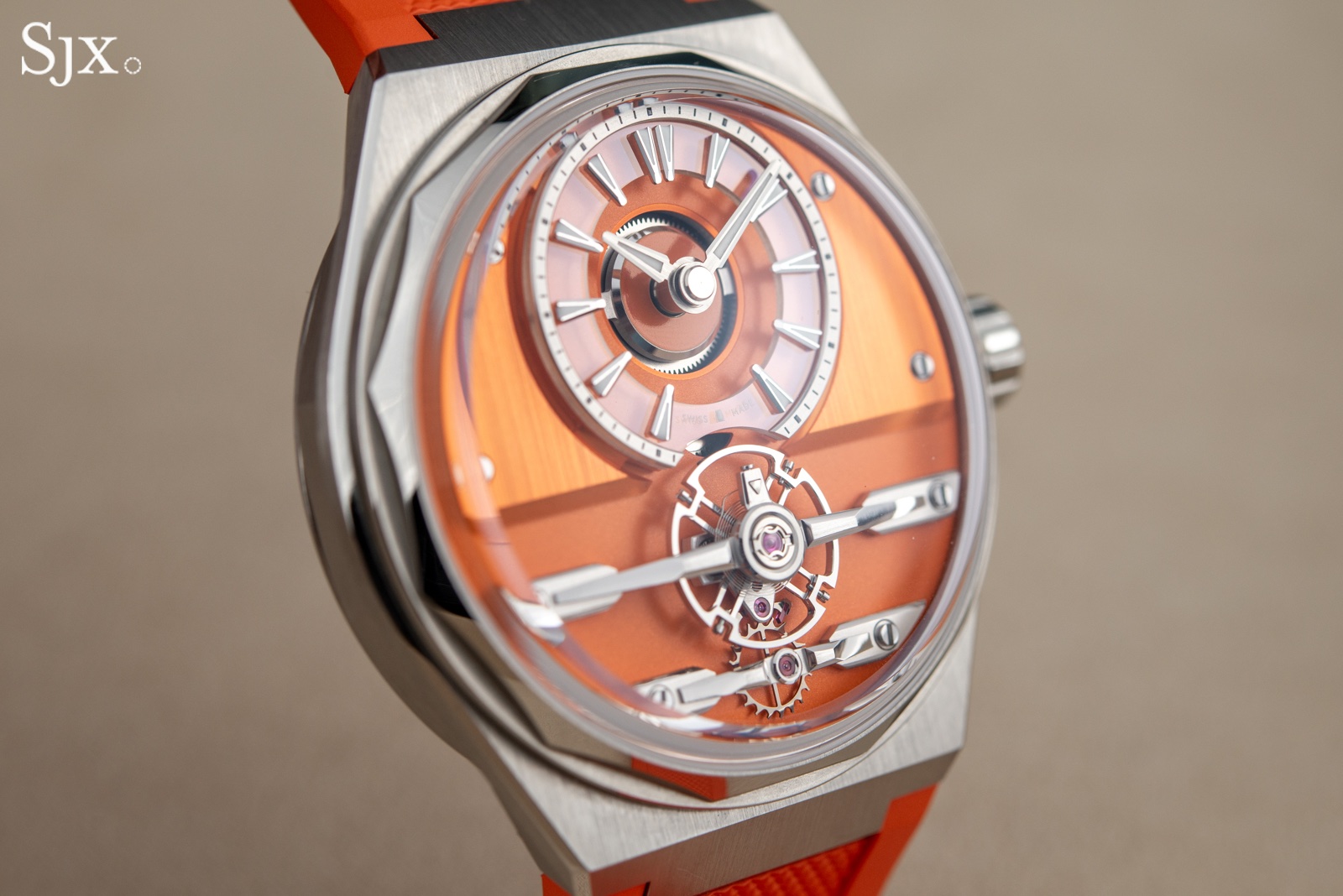
Initial thoughts
I find architectural watchmaking inherently appealing, and appreciate it when watchmakers and designers work in tandem to elevate mechanical components into miniature works of art. It can come across as gimmicky, but when done well it results in an enthralling and educational wearing experience.
Given the steep development costs, this type watchmaking has long been the exclusive domain of high end brands like MB&F and Ulysse Nardin. But CW has been moving in this direction since the launch of the Bel Canto, and the Loco, despite its relative simplicity, is a worthy follow-up to its striking sibling.
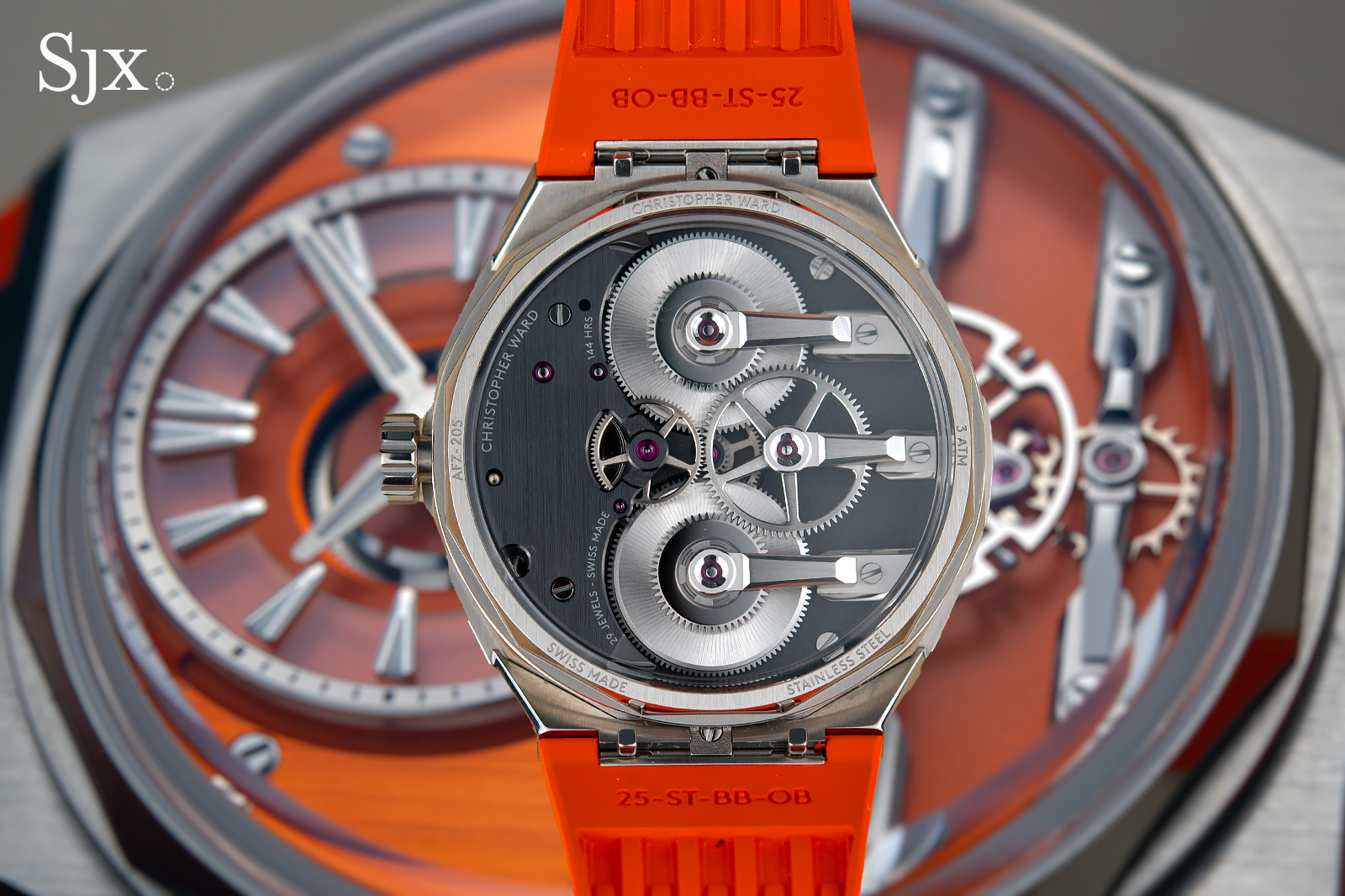
Sitting within the Twelve collection, CW’s take on the integrated bracelet sport watch, the Loco’s case is similar to that of the Girard-Perregaux Laureato, with a flat-sided bezel and wrist-hugging case.
Offered exclusively in steel, the Loco’s dimensions are typical of the genre, 41 mm in diameter and 13.7 mm high. The latter might raise a few eyebrows, but the thickness is used to great effect to show off the movement. In other words, I don’t think it would benefit from being thinner.
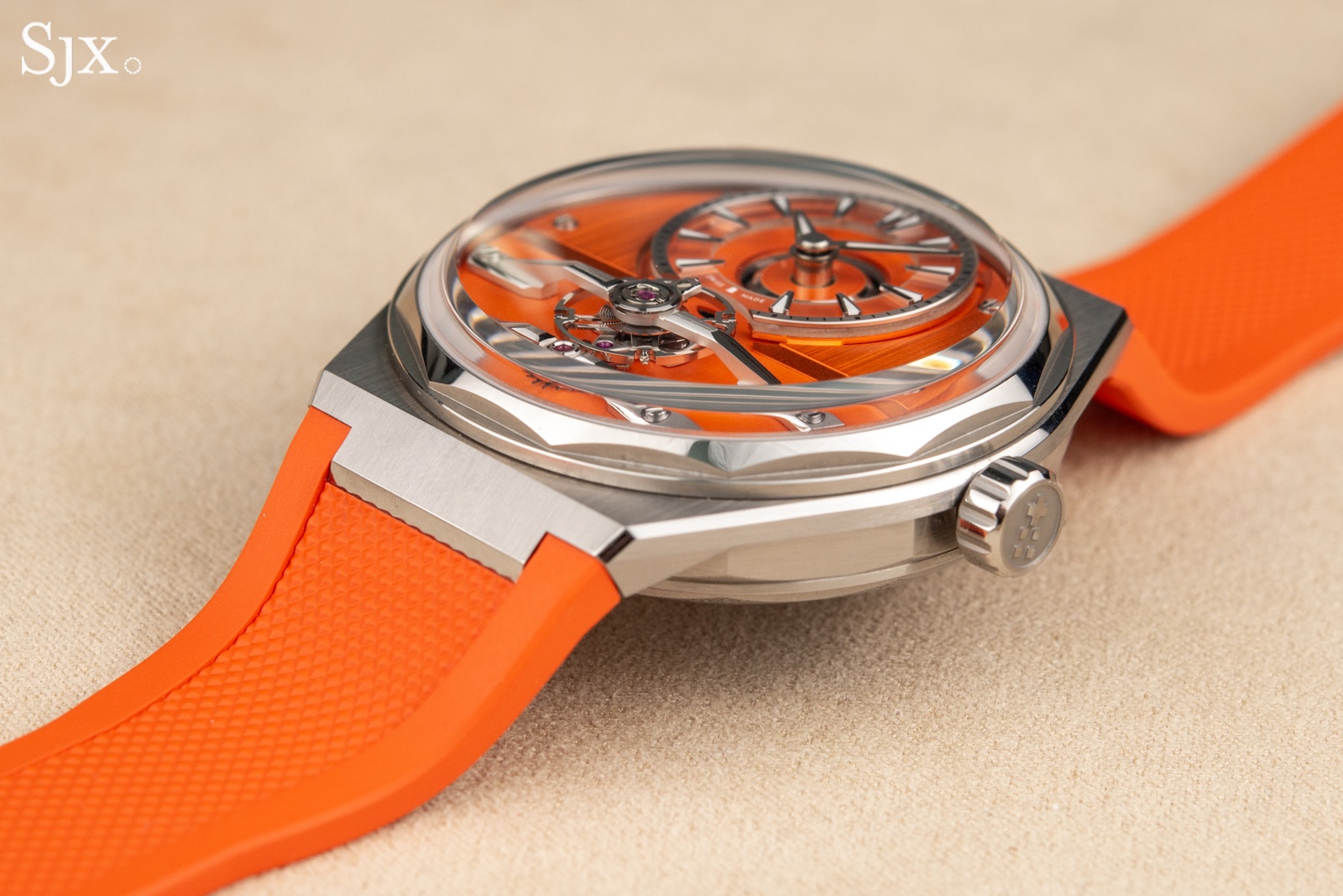
The Loco is powered by the manually wound CW-003 movement, which offers 144 hours of power reserve from two large mainspring barrels. More interesting than this headline figure is the movement’s original design, which includes the brand’s first free-sprung balance floating below the dial.
The view through the case back shows off more three-dimensionality with individual steel bridges for each barrel. You’ll find the DNA of a Valjoux cal. 7750 if you peel the onion, and it’s a competent and visually engaging movement.
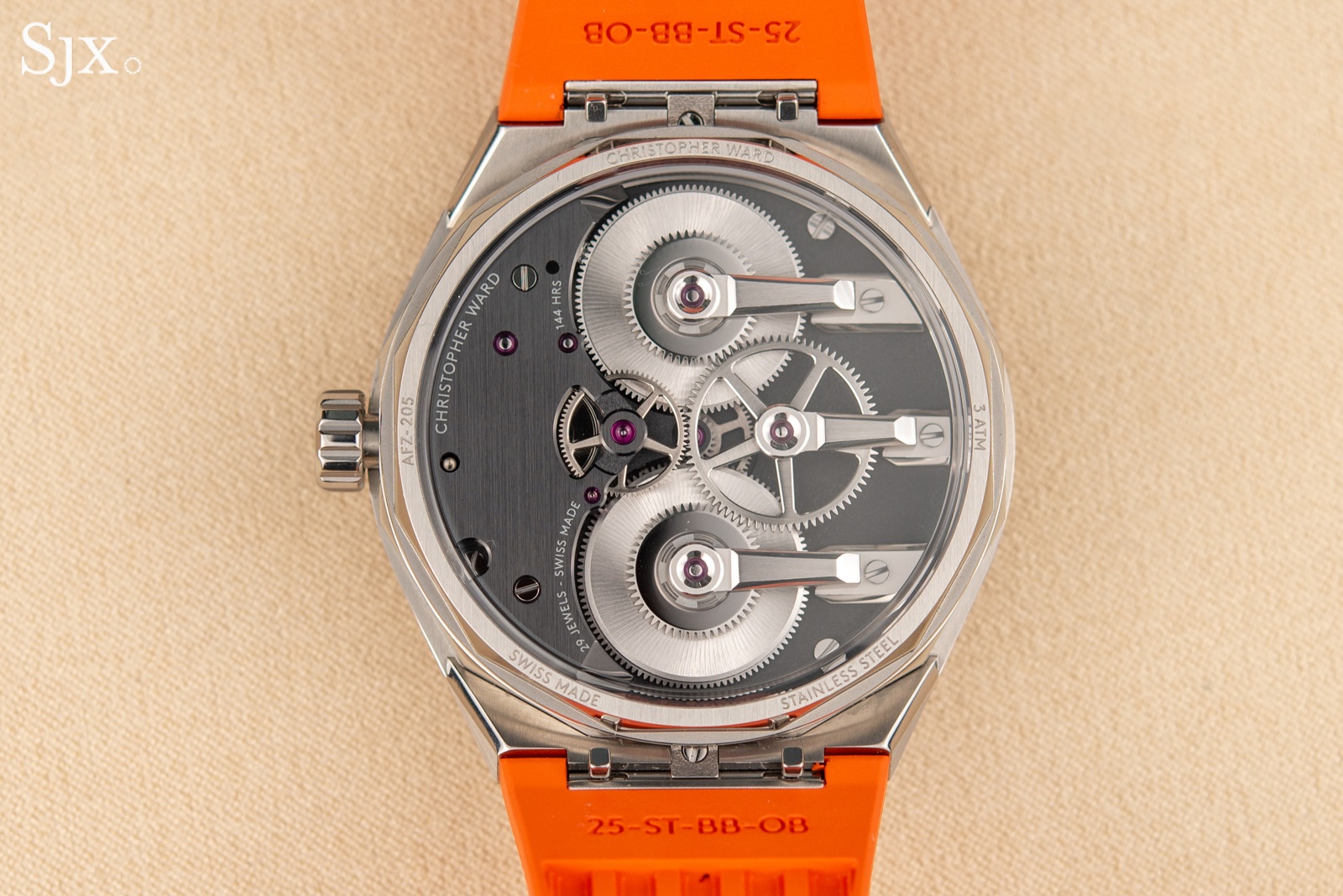
The dial itself is a small doughnut-shaped piece of sapphire crystal that reveals a hint of the motion works beneath the dial. The hour markers are affixed with adhesive, as is typical for applying indexes to sapphire, and like the hands they are deeply straight-grained and faceted to catch the light. Overall the dial looks expensive from all angles and even under magnification it’s hard to fault.
One thing absent from the dial is the Christopher Ward name and logo, a practice we first saw with the Bel Canto. I appreciate the confidence to let the design do the talking, and it shows how far CW has come from its early days making mostly homage-style watches. In fact, the company’s new logo, which is appealing and depicts England’s Saint George’s Cross next to the white cross of the Swiss flag, is found only on the crown.
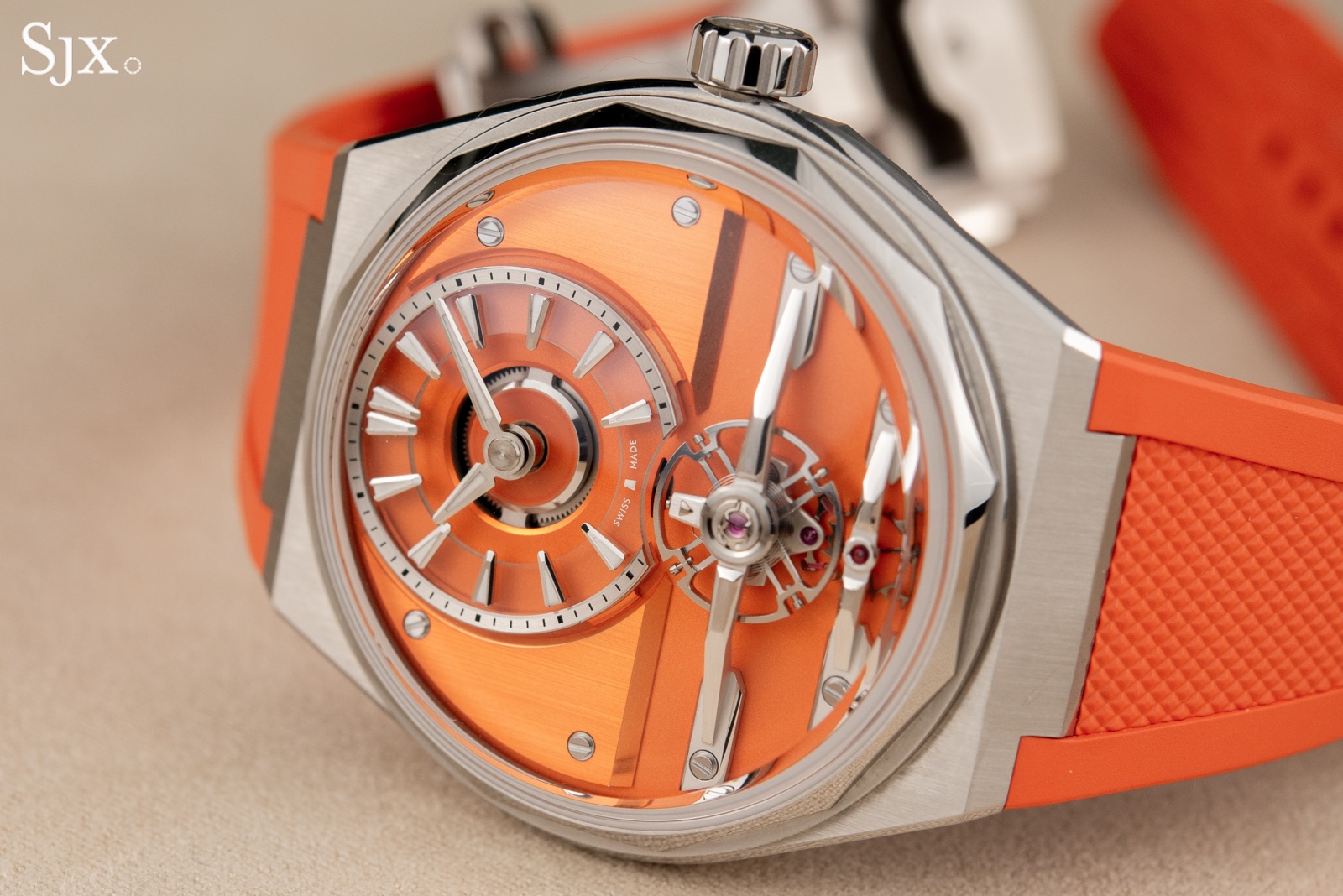
Priced under US$5,000 with or without a bracelet, the Loco is a good value from almost any perspective. Not only is it comfortable and enjoyable to wear, the brand has made calculated trade-offs to offer a high-spec movement that looks like something many times its price.
A stadium on the wrist
The Loco is a highly sculptural watch, inside and out, with contrasting finishes that make the most of its geometric forms; it would be a tedious process to inventory the numerous straight-grained, beveled, polished, and frosted surfaces found throughout the case, dial, and movement.
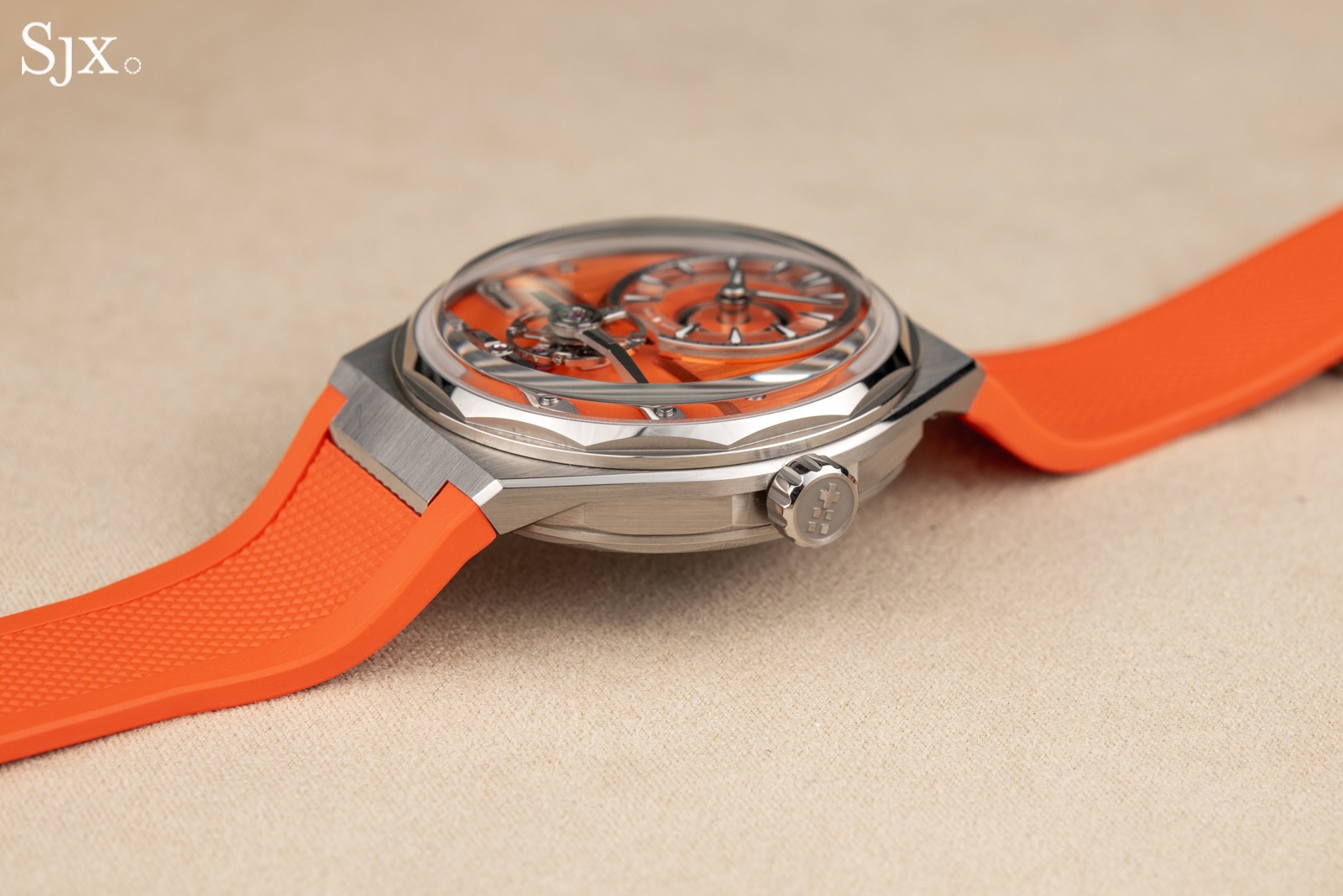
Most of the external components such as the case, strap, and dial are sourced from suppliers in Asia, which helps explain why the pricing is as low as it is. Similar in this regard to the Anoma A1, the Loco is a testament to the quality of components coming out of China.
While most brands would struggle to manage such far-flung suppliers, CW maintains direct relationships with its manufacturing partners in the region and ensures that no further subcontracting is involved, which helps with quality control.
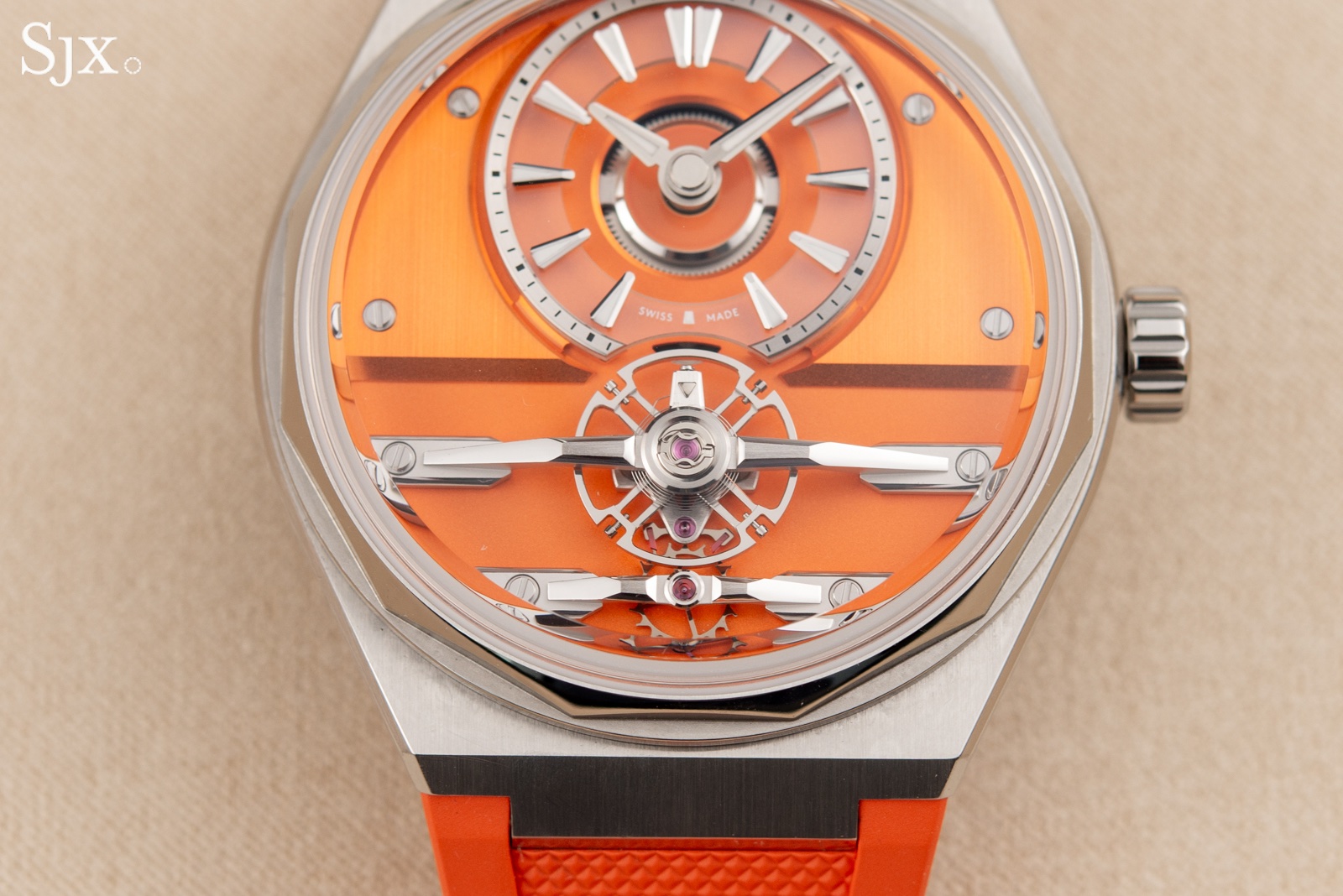
Though the sample pictured is a fiery burnt orange colour, the Loco can also be had in white, black, and blue. The relatively plain colours are perhaps the only thing I’d change, and I imagine we’ll be treated to more nuanced colours as time passes.
Regardless of colour, the mix of vertical brushing and frosting creates a pleasing backdrop for the offset sapphire crystal dial and the escapement, which is fully exposed in three dimensions, sitting up above the dial like an escapement model.
And a model escapement it is, with a large free-sprung balance, nicely finished bridges, and colour-matched Incabloc shock absorber.

The case profile wears slimmer than its headline thickness of 13.7 mm would suggest, thanks to the diminishing diameter of the faceted domed sapphire crystal and the design of the case. Visually, the case resembles something like the Bremont Trip-Tick, with a thin case band atop an exposed barrel.
In the case of the Loco, these components are built as a single piece, and at arm’s length the twelve-sided case gives the impression of a miniature domed stadium or arena, which is oddly appealing. The edges of the case are embellished with bevels that feature reasonably clean transitions between straight-grained and polished surfaces.
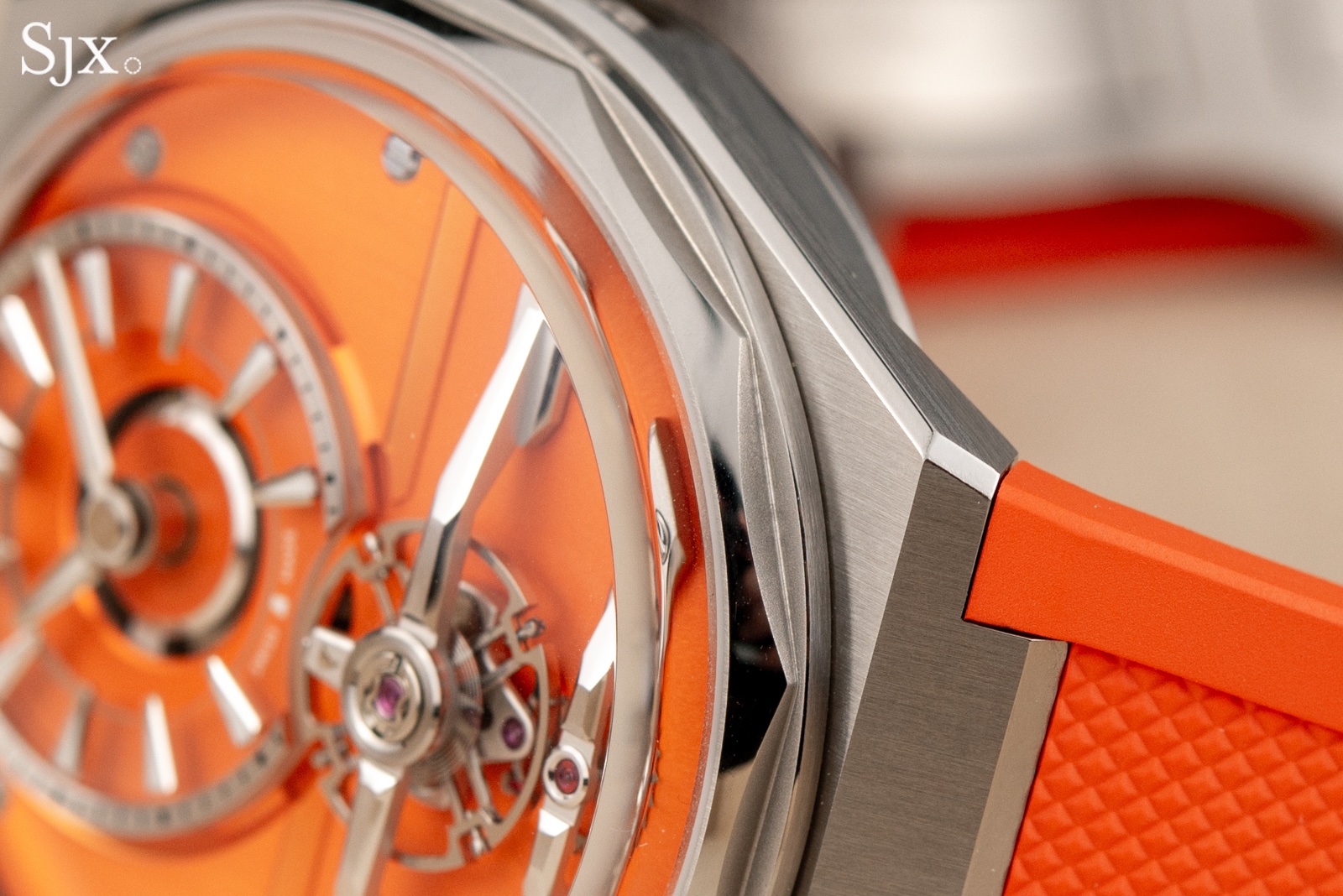
The Loco is well-balanced on the wrist and stays planted thanks in part to the tapered rubber strap and stable folding clasp.
The Loco is also available with a stainless steel bracelet, which can be swapped on and off without tools, but this configuration increases the weight and makes it look like it’s trying too hard to look like every other integrated bracelet sport watch.
I opted for the strap while wearing the Loco on vacation in Tuscany and it was very comfortable throughout the trip, despite the summer humidity. And the strap itself is worth checking out; I encountered several collectors while wearing the Loco and all of them remarked on the softness of the strap.
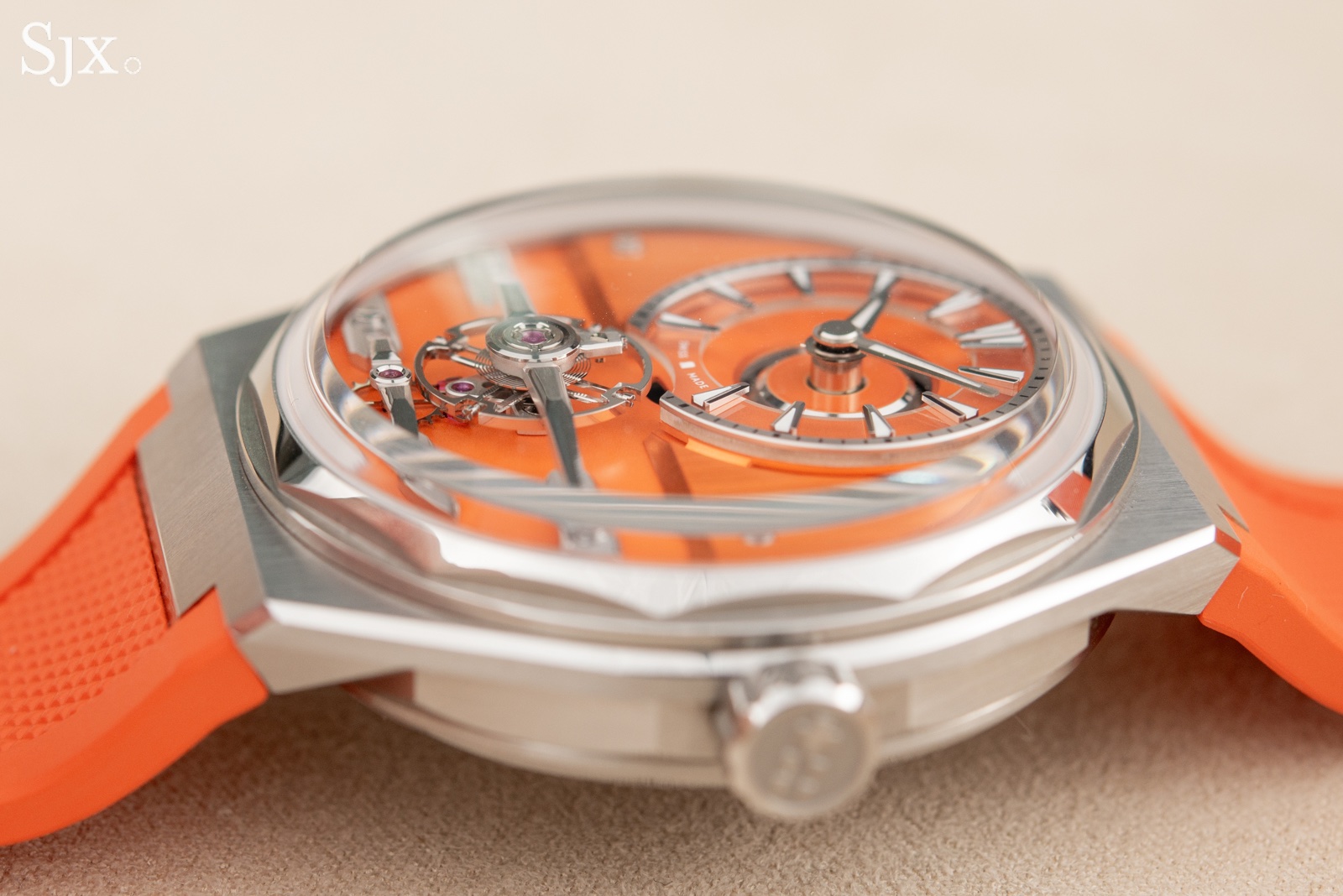
The Loco’s stated water resistance is only 30 m, but I’d be confident taking it underwater thanks to the screw-down crown, which is the same design used on similar models with superior depth ratings. The reason for the relatively paltry rating has to do with the domed sapphire crystal, which forced the designers to compromise crush resistance for a more wearable thickness; it was the right decision. For day-to-day exposure to moisture and casual immersion, it offers plenty of security.
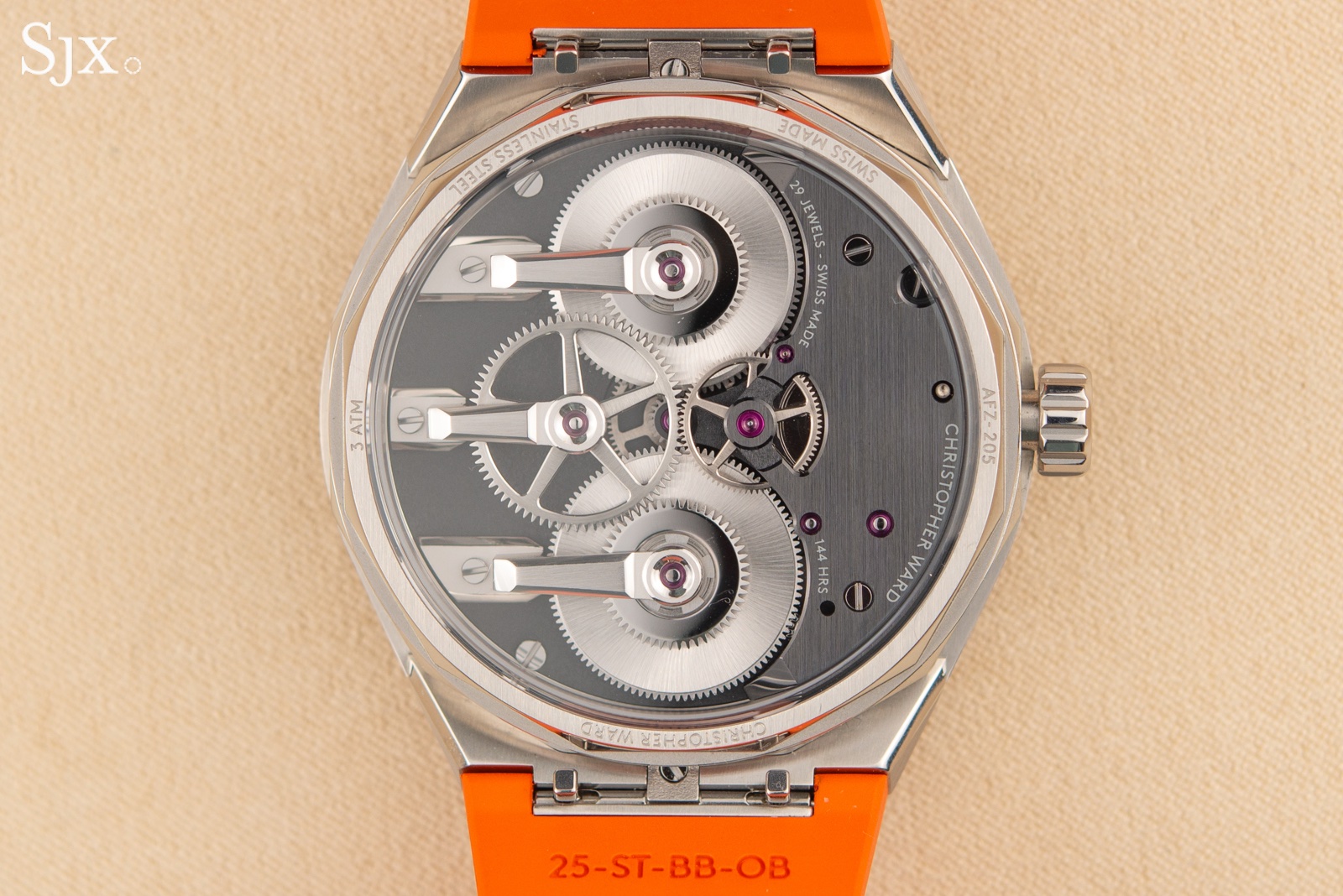
An architectural caliber
We covered the origins of the CW-003 movement at launch, but it’s worth reviewing the basics. The movement is basically a dressed up SH21, which debuted in 2014 as the brand’s first in-house movement. The ‘SH’ prefix refers to Synergies Horlogères, the Biel-based movement manufacturer that merged with CW that same year.
The SH21 was a manually wound, double-barreled movement derived from the tried-and-true Valjoux cal. 7750 gear train. The CW-003’s humble roots are hard to find, though the ghost position in the keyless works, likely capable of setting the date on a watch so equipped, speaks to the economies of scale required to keep costs low. But this is a sensible concession to cost that in no way impairs the wearing experience.
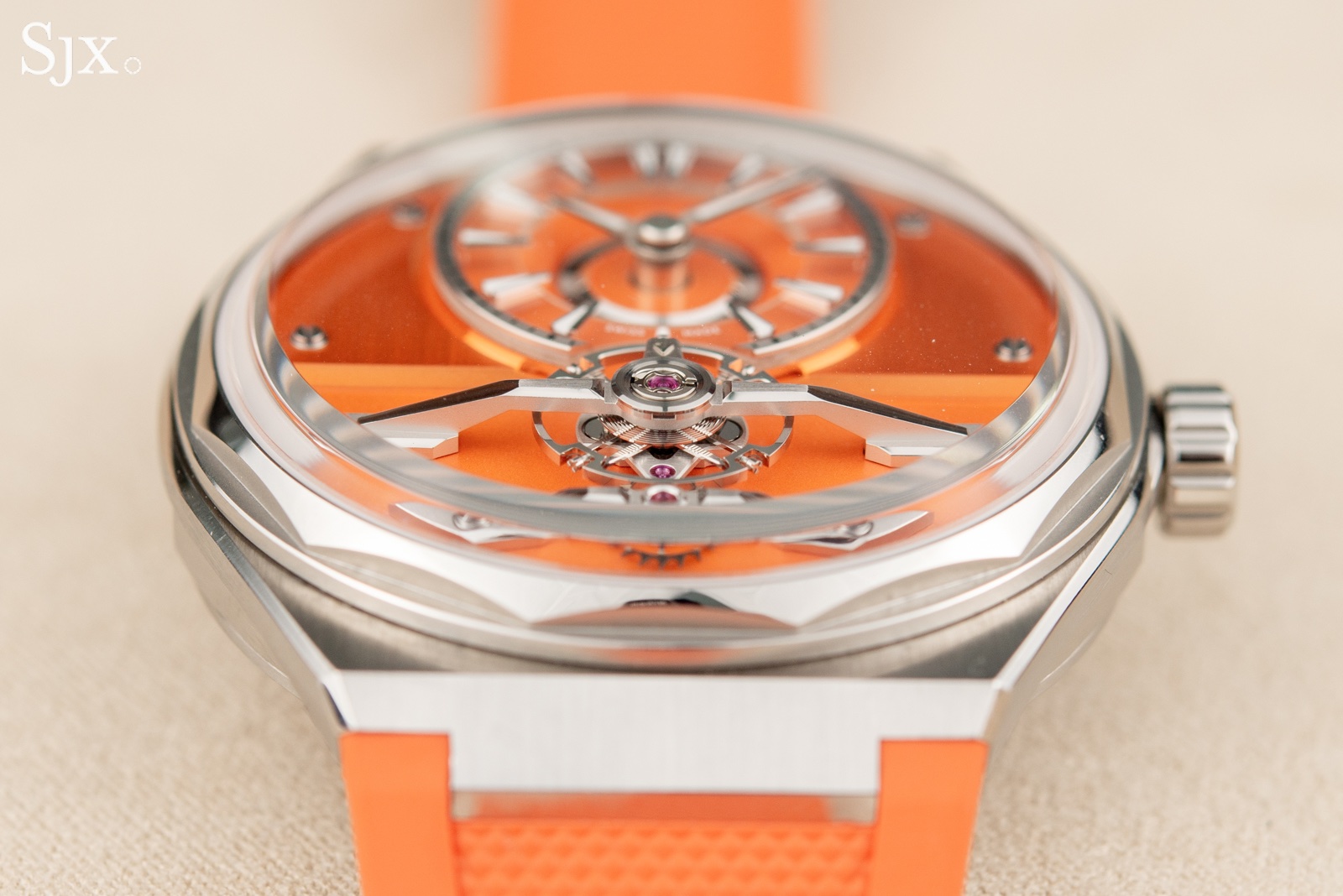
You’d be forgiven for thinking the CW-003 is a novel construction, due to its imaginative architecture and the addition of an inverted free-sprung balance. This emphasis on visual movement design is something we’re seeing more of, and I believe we’re still at the beginning of this trend.
This idea is not new; it goes back at least as far as the pocket watch-style three-quarter plate design brought back by A. Lange & Söhne in 1994, but as a design trend it never really trickled down beyond the lower reaches of haute horlogerie.
What Christopher Ward has achieved with the CW-003 is truly impressive; it manages to look innovative while benefiting from a highly mature and cost-effective Valjoux cal. 7750 technical foundation.
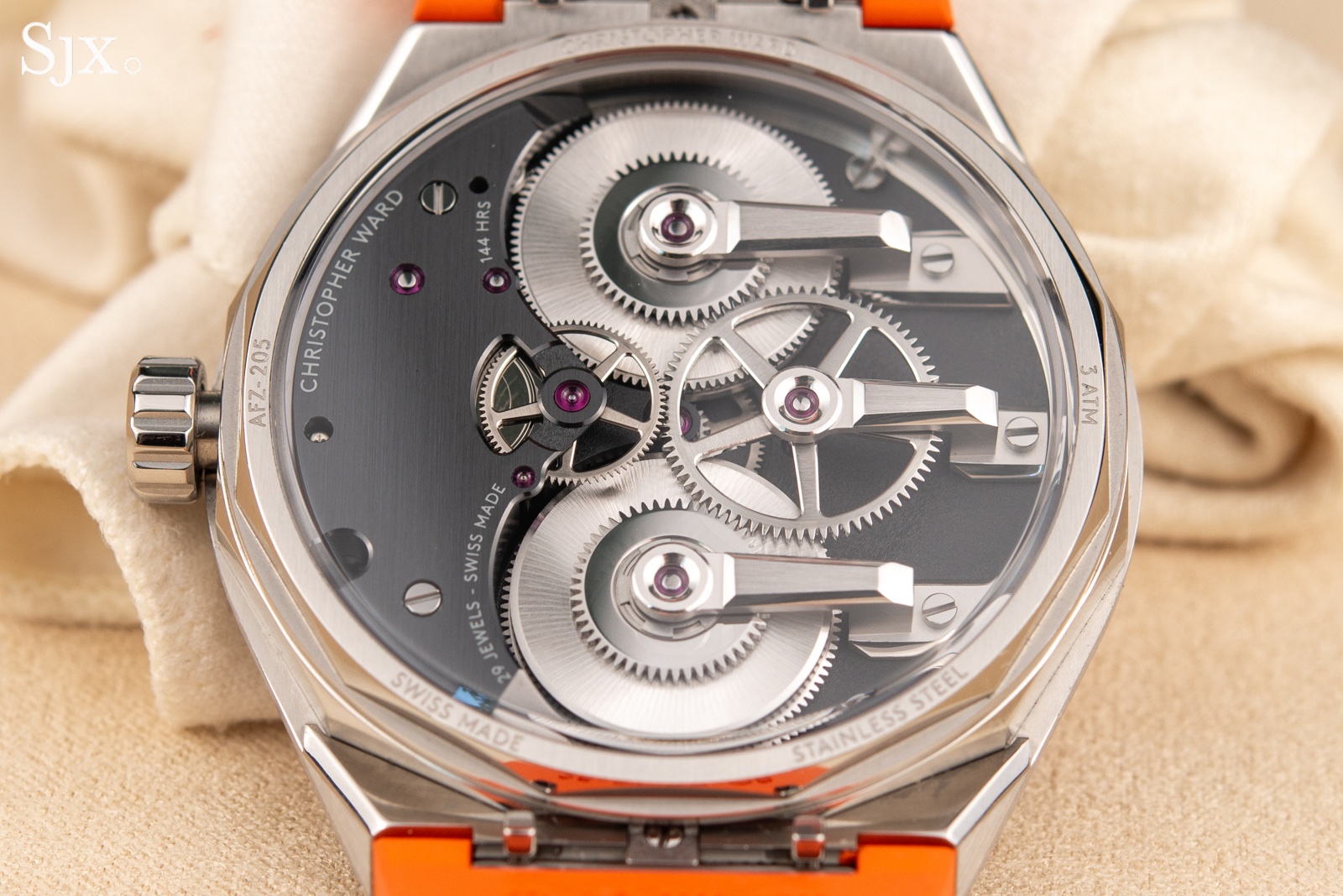
Visually, the CW-003 is dominated by five steel bridges, two on the front, supporting the balance and escape wheels, respectively, and three on the back, supporting the barrels and their intermediate wheel.
These bridges are extravagantly faceted with complex geometries that show off shiny edges and wide countersinks around the jewels. The polished surfaces are remarkably well done; in some images the photographer can be seen reflected in the bowl-shaped countersinks. The eight screw heads visible on the dial show equal attention to detail.
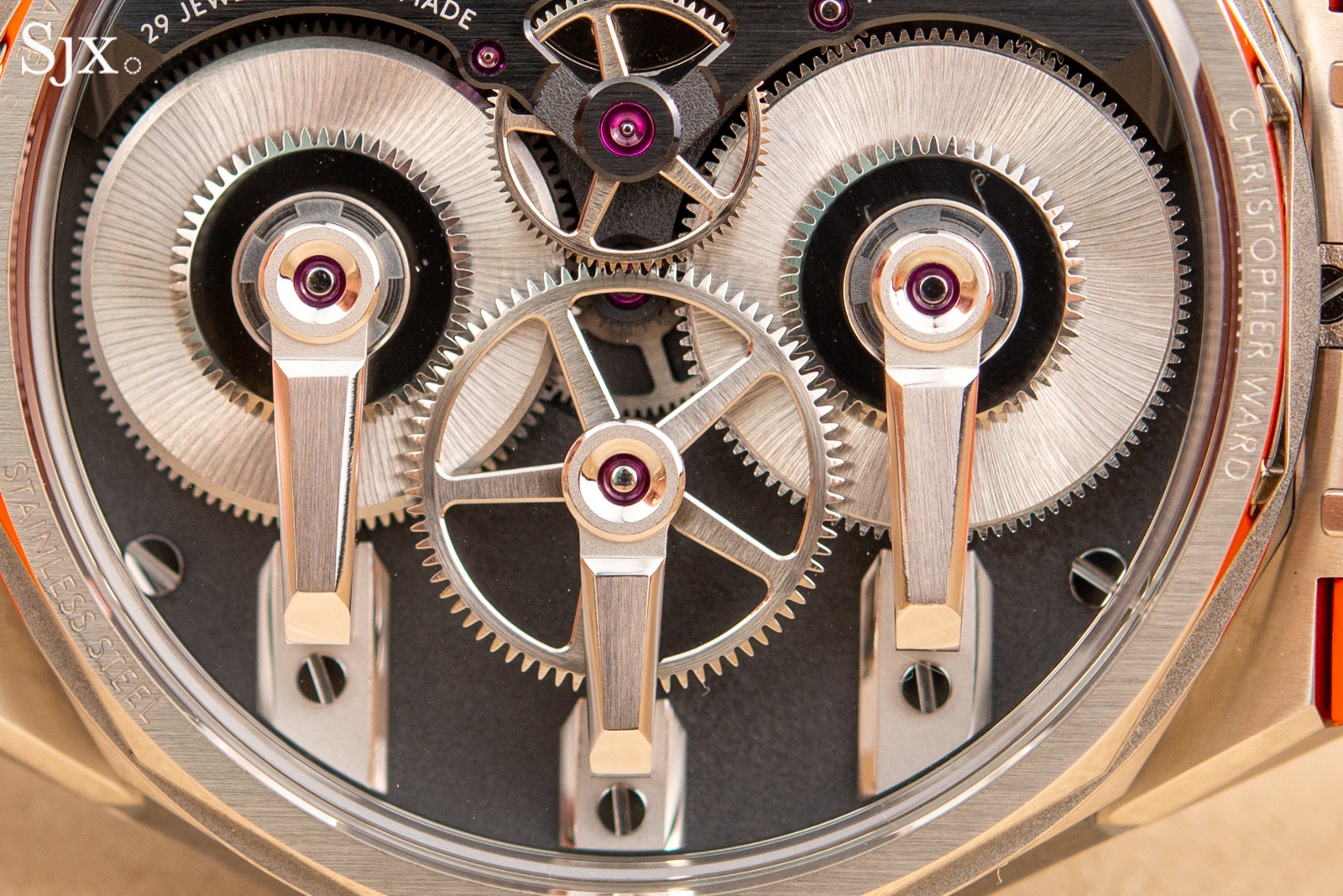
Photographer’s note: some dust is visible on the outside of the crystal
As discussed, the Loco’s external components are mostly sourced from Asian suppliers, but the movement is thoroughly Swiss. The bridges, for example, are CNC milled by Paoluzzo in Biel, before they are transported about an hour north to Atelier de Polissage Jurassien (APJ) where they are finished.
The components are then taken back to CW’s facility in Biel for assembly. In total, each CW-003 movement benefits from about five hours of hand finishing, primarily with rotary tools, and all of it is done in Switzerland.
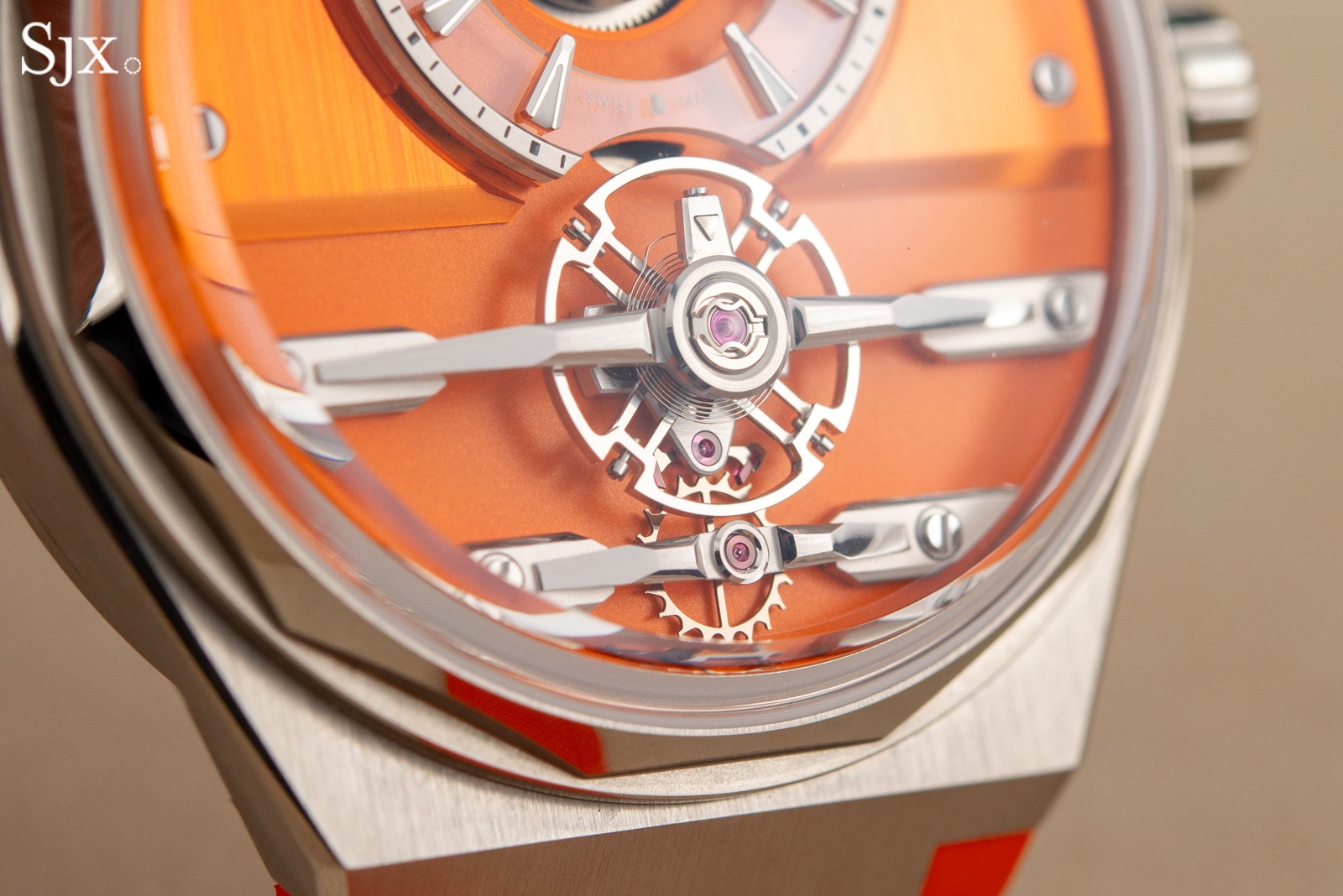
Given the Loco’s value-oriented positioning, it’s reasonable to wonder how this is possible. The answer is probably found in the slight waviness of the mirrored surfaces, which is suggestive of electrochemical polishing. This process uses a mild electrolytic acid and an electrical current to eat away at any coarseness left over after machining and tumble polishing, and results in a bright, shiny finish that can almost pass for black polish at arm’s length.
While real black polishing can produce a true mirror finish, and actually changes the material’s molecular surface structure to improve hardness and corrosion resistance, it’s a labour intensive process that’s only practical at higher price points. The finishing on the CW-003 is a fairly convincing imitation of the real thing, and looks better than most peers that aren’t putting in the effort.

Mechanically, the CW-003 is no slouch, providing 144 hours of power reserve despite a consumptive 4 Hz rate. The movement is adjusted to an internal benchmark of -0 to +7 seconds per day, but lacks a seconds hand, making pinpoint observations impossible without a timing machine.
During the month or so that I wore the Loco, the movement seemed to run dead-on for the first 48 hours before drifting a little fast for the remainder of the power reserve. There’s no power reserve display per se, but the state of wind can be roughly guessed from the visible amplitude of the balance; when it gets close to the end, the balance oscillation is less lively.
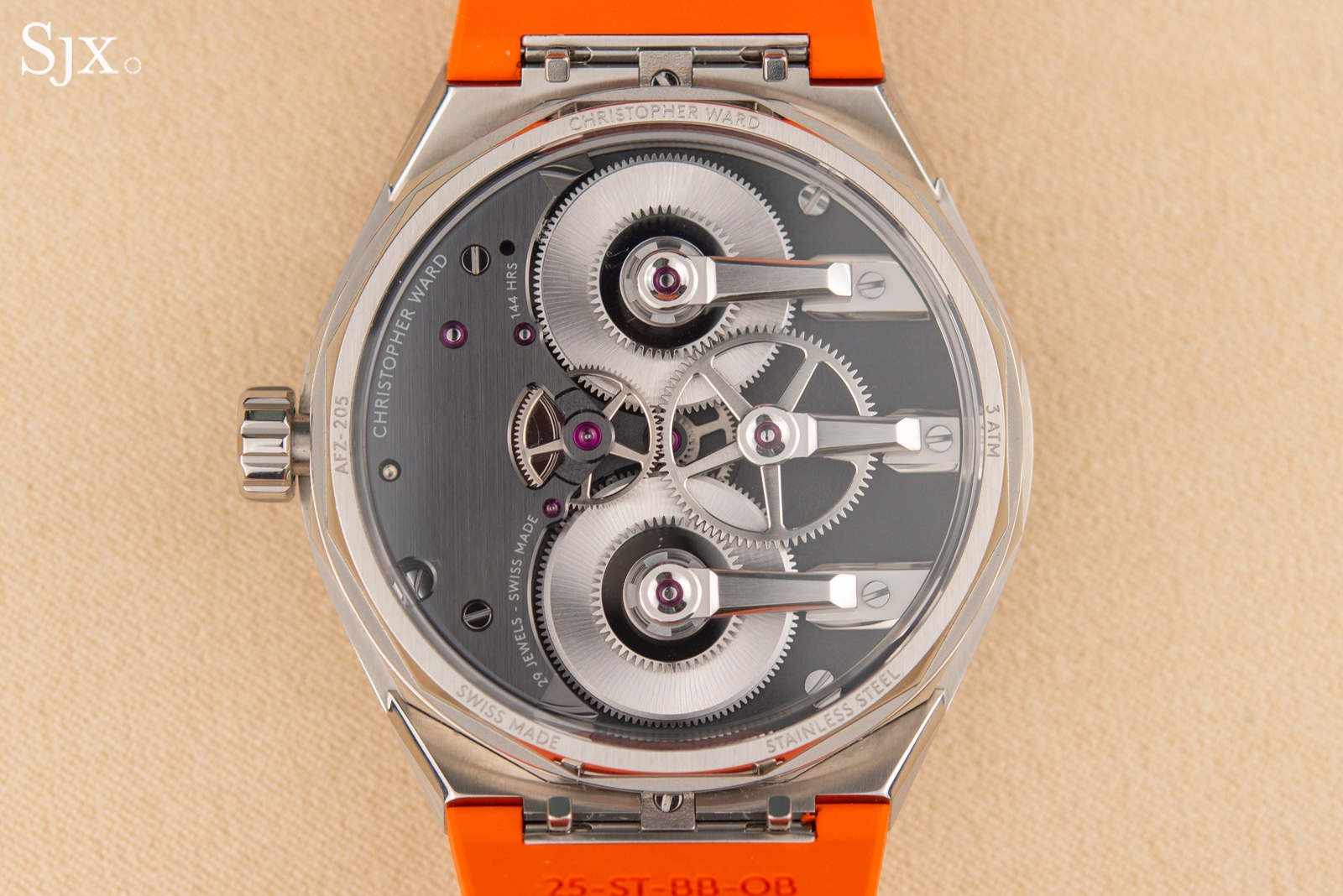
Closing thoughts
It’s rare to pick up a watch in this price segment and marvel at the finishing, but I found myself doing just that during my time with the Loco. Close examination reveals the cost-effective techniques used, but there’s little to complain about when the savings are passed on to the buyer.
Thanks to its thoughtful design and intelligent trade-offs, the Loco looks and feels far more expensive than it is, and attracted a lot of comments during my time with it. But more than that, the Loco feels like a harbinger of things to come in terms of architectural movement design.
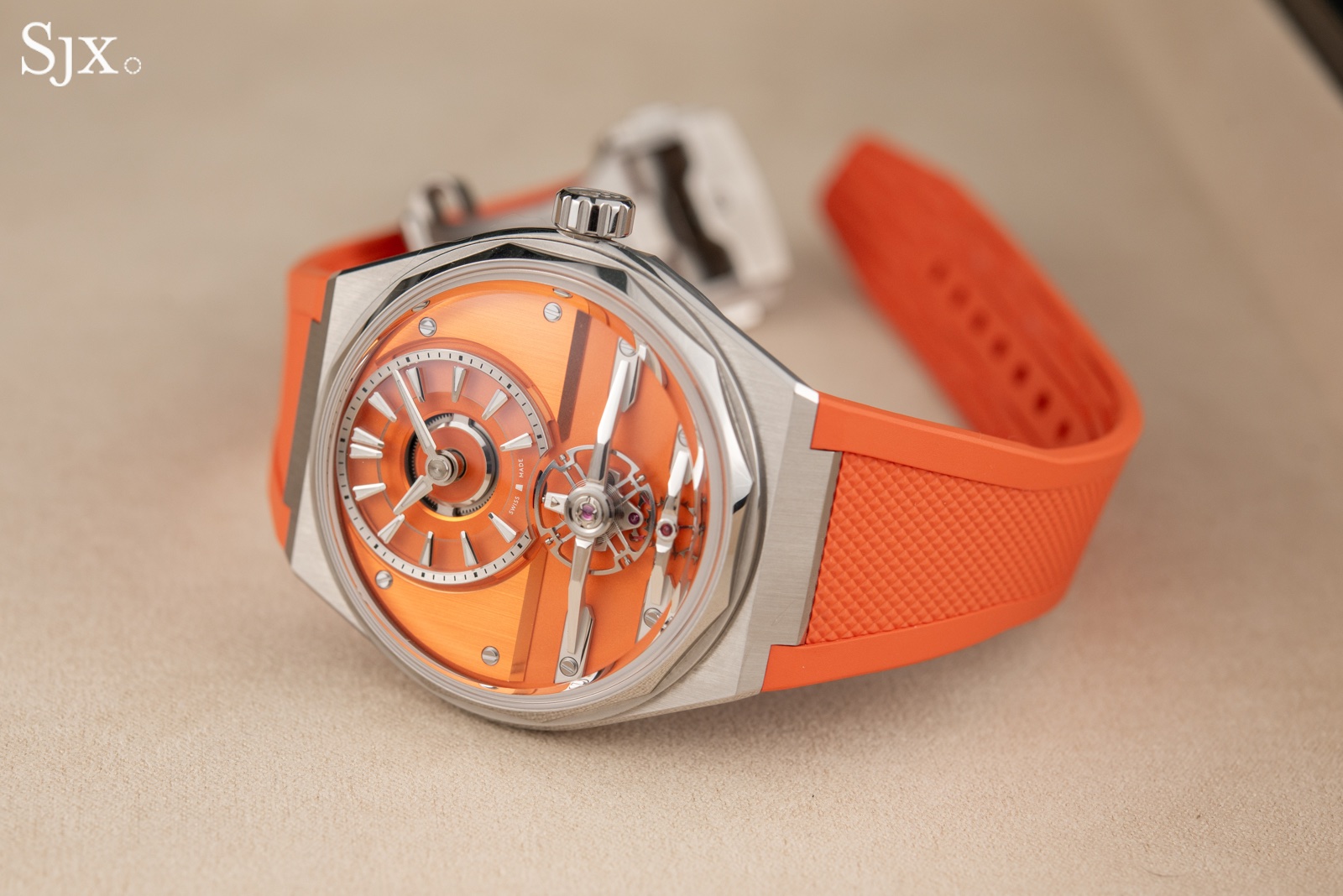
Key facts and price
Christopher Ward C12 Loco
Diameter: 41 mm
Height: 13.7 mm
Material: Stainless steel
Crystal: Sapphire
Water resistance: 30 m
Movement: CW-003
Functions: Hours and minutes
Frequency: 28,800 beats per hour (4 Hz)
Winding: Manual
Power reserve: 144 hours
Strap: Stainless steel bracelet or rubber strap
Limited edition: No
Availability: Direct from Christopher Ward
Price: US$4,595 on the rubber strap; US$4,825 on the bracelet
For more, visit christopherward.com.
Back to top.

